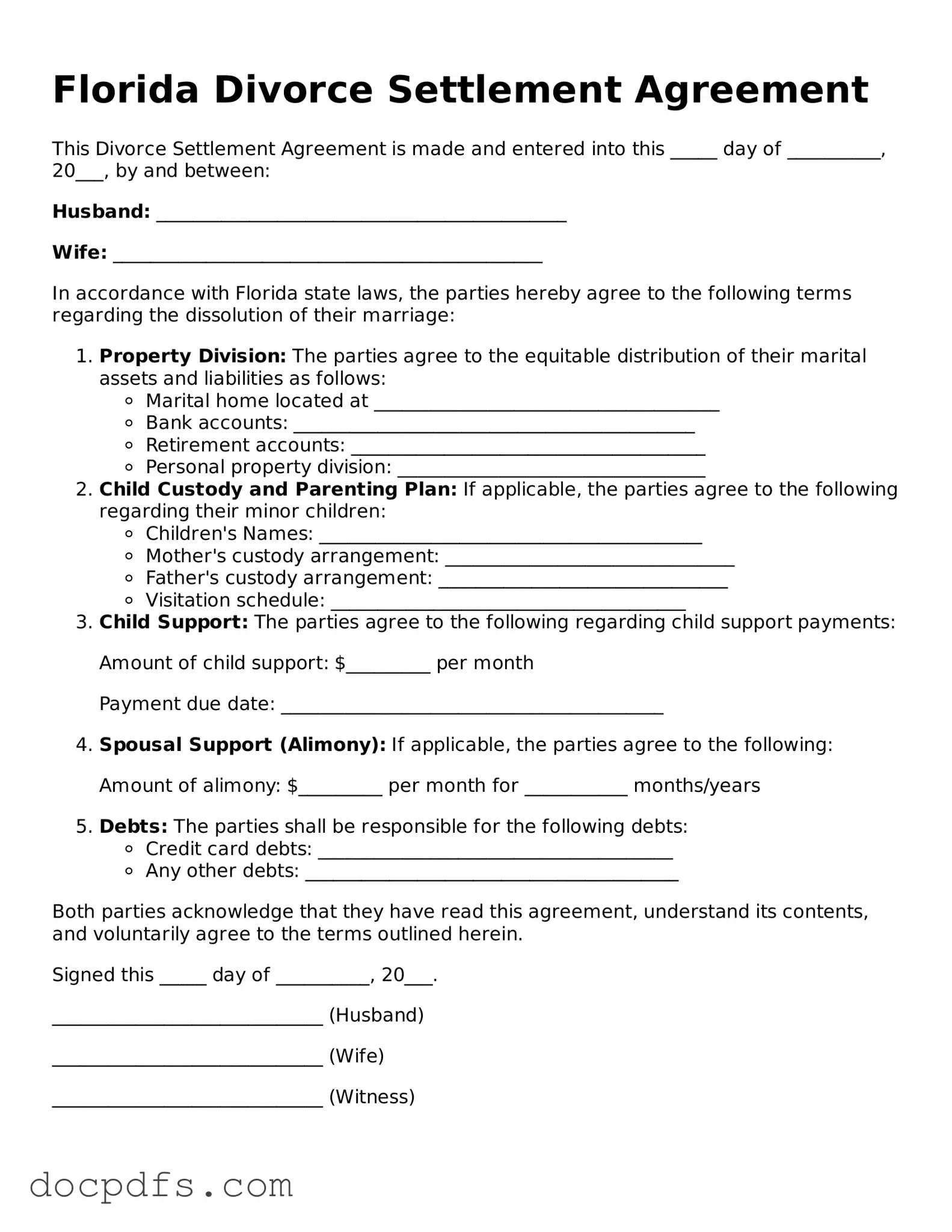What is a Florida Divorce Settlement Agreement?
A Florida Divorce Settlement Agreement is a legal document that outlines the terms and conditions agreed upon by both parties during a divorce. This agreement typically covers important aspects such as the division of assets and debts, child custody arrangements, child support, and spousal support. By creating this document, both parties aim to reach a mutual understanding and avoid prolonged litigation.
Who needs to complete a Divorce Settlement Agreement?
Any couple going through a divorce in Florida should consider completing a Divorce Settlement Agreement if they have children, shared assets, or debts. It is particularly beneficial for couples who can communicate effectively and reach consensus on key issues. Even in contested divorces, a settlement agreement can help streamline the process and minimize court involvement.
How is a Divorce Settlement Agreement created?
Creating a Divorce Settlement Agreement typically involves several steps:
-
Negotiation:
Both parties discuss and negotiate the terms they wish to include in the agreement.
-
Drafting:
Once an agreement is reached, one party or both can draft the document, ensuring all terms are clearly outlined.
-
Review:
It is advisable for both parties to review the agreement, possibly with legal counsel, to ensure that their rights are protected.
-
Signing:
After any necessary revisions, both parties must sign the agreement in front of a notary public.
What happens if one party does not comply with the agreement?
If one party fails to comply with the terms of the Divorce Settlement Agreement, the other party has several options. They can file a motion with the court to enforce the agreement. The court may then hold the non-compliant party in contempt, which could lead to various consequences, including fines or changes in custody arrangements. It is crucial to document any violations to support enforcement actions.
Can a Divorce Settlement Agreement be modified?
Yes, a Divorce Settlement Agreement can be modified, but only under certain circumstances. If there is a significant change in circumstances—such as a change in income, relocation, or changes in the needs of the children—either party may request a modification through the court. The court will review the request and determine whether the changes warrant an adjustment to the original agreement.
Is legal assistance necessary when creating a Divorce Settlement Agreement?
While it is possible to create a Divorce Settlement Agreement without legal assistance, it is highly recommended to seek guidance from a qualified attorney. Legal counsel can help ensure that the agreement is fair, complies with Florida law, and adequately protects both parties' rights. Additionally, an attorney can provide valuable insights during negotiations and help navigate any complexities that may arise.
